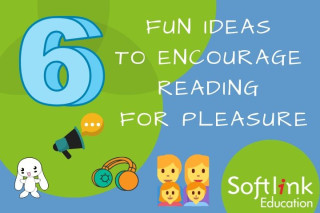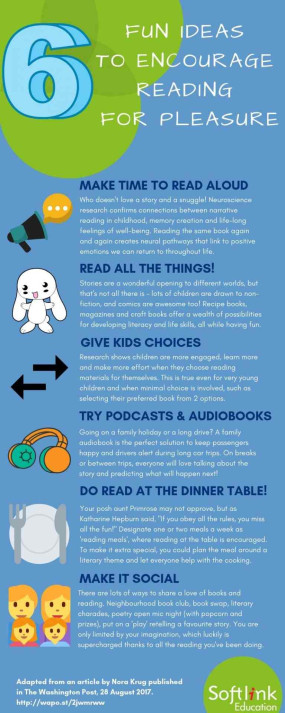- Your School Type
- Solutions
- Resources
- Blog
- Events
- More
- Contact Us
- Book a Demo
- Get a Quote

The end of term is just around the corner – hooray! While students and educators are no doubt looking forward to a well-earned break, you may also be wondering how to ensure all your hard work helping students achieve results at school doesn’t come undone while they are away from their desks.
There’s plenty of research that indicates recreational reading is key to achieving and sustaining educational outcomes – as well as a whole range of other benefits. You can read about some of that research in this excellent article by teacher librarian Josephine Laretive, published in the September 2017 edition of ACCESS magazine. Josephine is passionate about school libraries and promoting quality children’s literature. Her Library Owl blog is a wonderful source of creative library ideas and she has written extensively on topics relevant to educators, including this guest post for the Softlink Education blog about using picture books to teach visual literacy.
In the UK, the Centre for Literacy in Primary Education (CLPE) has published this framework of “What we know works” with regard to reading for pleasure, based on research from its Power of Reading project.
The Scholastic Reading Report is another source that backs the importance of reading for fun. Encouragingly, this year’s report has again revealed that more than half (58%) of the children surveyed love or like to read. But what about the other 42% who say they don’t really enjoy reading? And how exactly do you foster a love of reading, when there’s a tendency for kids to associate books with ‘un-fun’ things like schoolwork and assessments?
According to guidelines from the UK Literacy Association, children are more likely to read for pleasure when this behaviour is modelled by the adults in their lives. This means it’s especially important for educators and parents to work together for the best outcomes.
To help with this team effort, we’ve created the infographic below, based on recommendations from librarians and education experts featured in this Washington Post article. We encourage you to download and share the infographic with parents (it makes a good bookmark), so they’ll have a go-to stock of ideas to help get kids reading for fun over the holidays.

School librarian Paul Register, aka “Bloke of Steel” is an enthusiastic advocate for using comics and graphic novels in schools to generate excitement for reading and to increase both library borrowing figures and student literacy levels. Paul founded the Excelsior Award for students aged 11 - 18 to encourage reading and highlight the many amazing graphic novels, manga and comic books that are available but largely unrecognised alongside more traditional book genres.
The benefits of comic books and graphic novels for literacy development are increasingly being recognised and promoted by educational organisations, for example this article from the International Literacy Association and this one from Scholastic both outline important points about their value for writing and reading instruction, as well as their potential to engage reluctant readers or provide an accessible entry point to literature and history topics for young readers.
Some kids are reluctant to believe any grown up who says that reading can be fun, so why not let them hear it from their peers? Here you can listen to an inspiring 8-minute talk by 11-year-old April Qu about the importance of books and stories in her life.
Your Oliver v5 school library system has several features that can help make reading and using the school library a more social experience for students. For example, students can personalise their logged-in backgrounds, and rate books or write their own reviews to share their likes and dislikes with friends. The search interface also offers reading recommendations based on users’ borrowing history and other criteria such as ‘New Items’ or ‘Highly Rated’, predictive-text searching and an attractive coloured display with book covers that students can easily drag and drop to their borrowing basket.
If you’re interested in finding out more about the how and why of encouraging children to read for pleasure, here are some more links to explore:
Kids’ Lit Quiz is an annual literature quiz for students aged 10-13 years in a growing number of countries around the world. Softlink is proud to have sponsored the UK, Australian and New Zealand editions of this awesome initiative for many years. In 2019, the World Final was in Singapore, and you can read about all the exciting activities that took place as part of the week-long celebrations in this blog article. Kids’ Lit Quiz is, of course, super fun for all the kids involved, and is an excellent way to encourage reading through a bit of healthy competition. Form your teams before the holidays and encourage kids to practice using the extensive bank of questions available on the Kids’ Lit Quiz website. Keep us updated on your progress via Twitter @SoftlinkEdu, or email us at: communications@softlinkint.com We’d love to hear from you!
Editor’s note: This blog article was first published in November 2017. Updated for freshness, relevance and accuracy in December 2023.